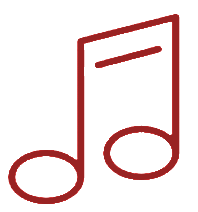About "SOMETHING BETTER TO DO"
"Something Better to Do" is a song written by John Farrar and recorded by Olivia Newton-John. The song was released in September 1975 as the lead single from Newton-John's sixth studio album, Clearly Love. The narrator of the song muses that she's having a hard time adjusting to life without her departed lover; even the birds are wasting their songs singing to her, and until her beloved returns, "the birds will have to find something better to do."
Record World said that the "Strong multi-tracked chorus contains the old Olivia charm."
"Something Better to Do" was Newton-John's fifth number one on the Easy Listening chart, spending three weeks at the top, while peaking at number thirteen on the Billboard Hot 100. In addition, the song went to number nineteen on the U.S. country chart. The record's performance on the Hot 100 and Country charts seemed to signal the beginning of a downturn in Newton-John's popularity, as it broke her streak of five consecutive singles to make the top ten of both charts stretching back to "Let Me Be There" in early 1974; however, her popularity on easy listening-oriented radio stations continued unabated for a time.
Top songs by Olivia Newton-John
 Hopelessly Devoted To You
Hopelessly Devoted To You Xanadu
Xanadu Physical
Physical Let Me Be There
Let Me Be There Candle In The Wind
Candle In The Wind Don't Stop Believin'
Don't Stop Believin' Sad Songs
Sad Songs Take Me Home Country Roads
Take Me Home Country Roads Sam
Sam Country Girl
Country Girl If Not For You
If Not For You I Honestly Love You
I Honestly Love You Magic
Magic Ave Maria
Ave Maria Please Mr Please
Please Mr Please Don't Cry For Me Argentina
Don't Cry For Me Argentina Rest Your Love On Me
Rest Your Love On Me We Go Together
We Go Together Help Me Make It Through The Night
Help Me Make It Through The Night Christmas Never Felt Like This
Christmas Never Felt Like This Suddenly
Suddenly Soul Kiss
Soul Kiss Clearly Love
Clearly Love You're The One That I Want
You're The One That I Want Take A Chance
Take A Chance No Other Love
No Other Love Physical (funny Version)
Physical (funny Version) Summer Nights
Summer Nights Back With A Heart
Back With A Heart Culture Shock
Culture Shock Blue Eyes Cryin' In The Rain
Blue Eyes Cryin' In The Rain The Air That I Breathe
The Air That I Breathe
"SOMETHING BETTER TO DO" video by Olivia Newton—John is property and copyright of its owners and it's embedded from Youtube.
Information about the song "SOMETHING BETTER TO DO" is automatically taken from Wikipedia. It may happen that this information does not match with "SOMETHING BETTER TO DO".
SONGSTUBE is against piracy and promotes safe and legal music downloading. Music on this site is for the sole use of educational reference and is the property of respective authors, artists and labels. If you like Olivia Newton—John songs on this site, please buy them on Itunes, Amazon and other online stores. All other uses are in violation of international copyright laws. This use for educational reference, falls under the "fair use" sections of U.S. copyright law.
